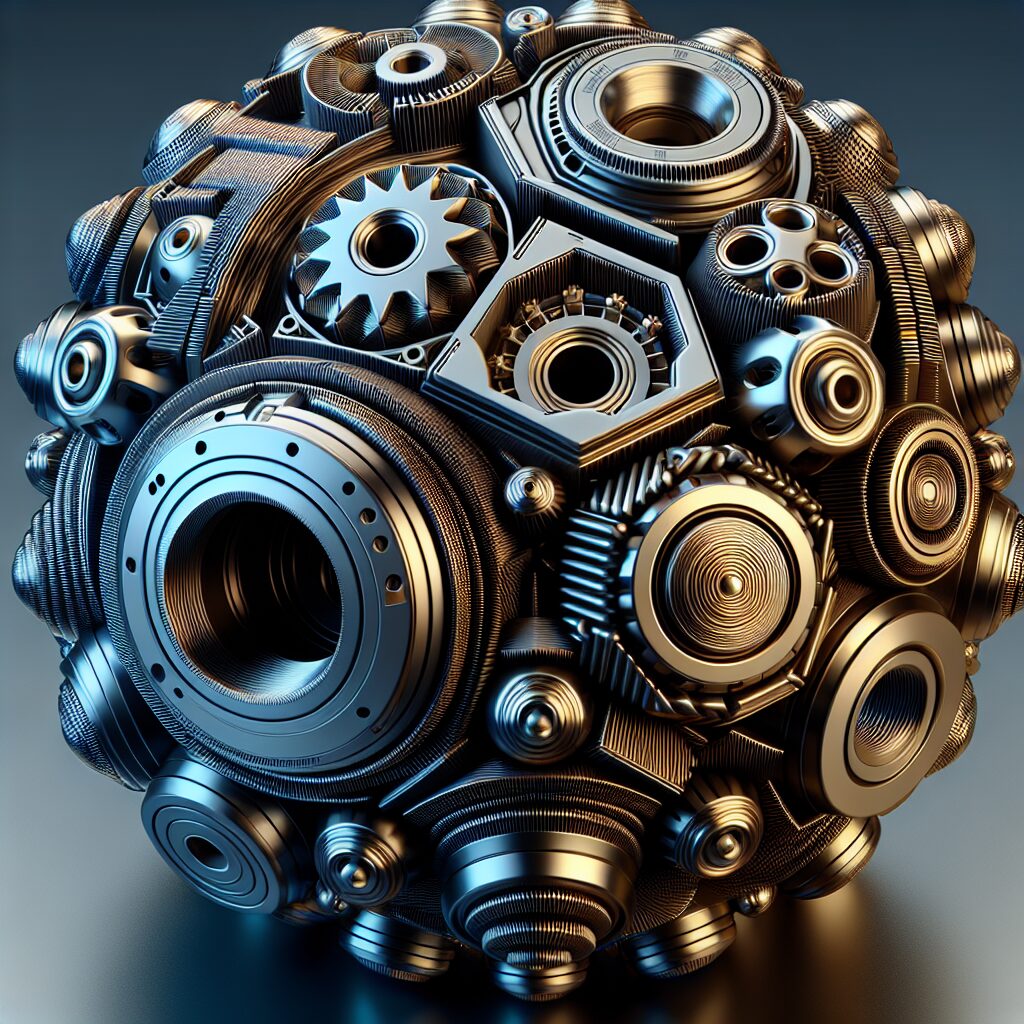A hairball is a small, compacted mass of hair that can form in the stomach or intestines of animals with fur or hair. They are usually cylindrical in shape and can range from the size of a marble to the size of a baseball. Hairballs are commonly found in cats, but they can also occur in other animals such as rabbits, ferrets, and dogs.A hair ball is a clump of hair that has been matted together and formed into a round or oval shape. It usually has a soft texture and can range in size from small to large. The color of the hair ball can vary depending on the type of hair it is made up of. Hair balls are most commonly found in cats, but can also be found in other animals such as rabbits, ferrets, dogs, and humans.
How Big Is a Hair Ball?
Hair balls, also known as trichobezoars, can vary in size. Most hair balls are small and can be easily passed through the digestive system. However, large hair balls can form when cats ingest a large amount of fur or hair over an extended period of time. Large hair balls typically measure between two and four inches in diameter and can cause serious health issues for cats if they are not removed.
Hair balls form when cats groom themselves by licking their fur and ingesting the loose hairs. The swallowed hairs then travel through the digestive tract, where they collect in the stomach and form a trichobezoar. Cats may vomit or pass the hair ball naturally, but if it is too large it will need to be removed surgically. Hair balls are usually round or oval-shaped, but they may also have an irregular shape depending on how much fur has been ingested.
It is important to note that some cats may be more prone to hair ball formation than others due to their breed or coat type. For example, long-haired cats such as Persians and Himalayans are more likely to suffer from hair ball formation than short-haired breeds like Siamese or Burmese cats. Additionally, older cats are more likely to develop hair balls than younger ones because they tend to groom themselves more often as they age.
In order to reduce the chances of a cat developing a large hair ball, it is important to brush your cat regularly in order to remove any loose hairs before they have a chance to be ingested. If your cat does develop a large hair ball, it is important to seek veterinary care as soon as possible in order to prevent any further health complications that may arise from having an untreated trichobezoar.
In conclusion, the size of a hair ball can vary depending on how much fur has been ingested over time by the cat and other individual factors such as breed or age. It is important for pet owners to understand how these factors can contribute to hair ball formation in order to reduce their pet’s risk of developing one.
What Causes Hair Balls?
Hair balls are a common problem for cats in particular, but can also occur in other animals with fur or hair. They are caused when a cat grooms itself and swallows its own fur. Over time, this swallowed fur accumulates in the stomach and can form a mass, referred to as a hairball. This mass of fur can cause digestive problems, so it is important for pet owners to take steps to reduce the likelihood of their pet developing hairballs.
The primary cause of hairballs is excessive grooming. Cats groom themselves daily by licking their fur, and some cats groom more frequently than others. This over-grooming leads to them swallowing more fur than they can digest, resulting in the formation of hairballs. Other potential causes include parasites such as fleas and mites that may cause a cat to groom more often than usual, or an underlying medical condition such as allergies which leads to increased grooming.
In addition to excessive grooming, poor diet can also contribute to the formation of hairballs. Cats require nutrients such as omega-3 fatty acids and taurine that are found in high-quality cat food formulas specifically designed for their needs; if these nutrients are not present in adequate amounts then cats may experience digestive issues that can lead to hairballs.
Finally, natural shedding may also be a contributing factor in the formation of hairballs. Shedding is a normal part of any animal’s life cycle; however, if an animal sheds excessively due to age or other factors then it will increase the amount of fur being swallowed by the animal while grooming and thus increase the chances of forming a hairball.
Overall, excessive grooming is the primary cause of hairballs for cats; however there are other factors such as parasites, medical conditions, poor diet and excessive shedding that may also contribute to this problem. It is important for pet owners to be aware of these potential causes so they can take steps to reduce their pet’s risk of developing hair balls.
Common Locations of Hair Balls
Hair balls, or trichobezoars, are masses of matted hair that cats sometimes swallow while grooming themselves. While these clumps of fur rarely cause medical problems in cats, they can be a nuisance for pet owners. Hair balls are most often found in the stomach and intestines of cats, but they can also accumulate in other parts of the body such as the esophagus. Hair balls can also be found outside of the cat’s body, usually near where the cat sleeps or spends time grooming itself. These masses of fur are usually oval-shaped and covered in saliva and mucus. They vary in size from a few millimeters to several centimeters.
Hair balls are most common in long-haired cats because they tend to groom themselves more than short-haired cats. However, short-haired cats may still develop hair balls if they ingest large amounts of fur while grooming. Ingested fur is typically passed through the gastrointestinal tract without any problems, but some cats may have difficulty passing it due to constipation or other medical conditions. In these cases, hair balls can accumulate and cause blockages that require medical attention.
Pet owners should be aware of the potential risks associated with hair balls and take steps to prevent them from forming. Regular brushing is important for both long- and short-haired cats to help reduce the amount of fur that is ingested during grooming sessions. Additionally, providing high-fiber foods and adding supplements to a cat’s diet can help prevent constipation and promote healthy digestion which can reduce the risk of hair ball formation.
Symptoms of Hair Balls
Hairballs, also called trichobezoars, are clumps of undigested hair that form in the stomach and intestines of cats. The most common symptom of a hair ball is vomiting. If a cat is suffering from a hair ball, they will typically vomit up a small round ball of fur. Other symptoms may include loss of appetite, constipation, fatigue, and weight loss. In more extreme cases, cats can suffer from severe dehydration and show signs of abdominal pain or discomfort. If left untreated, hair balls can lead to serious digestive issues such as obstruction or blockage of the intestine.
It is important to note that not all vomiting in cats is caused by hair balls. Other causes may include infection, parasites, dietary intolerances or allergies, or ingestion of foreign objects. If your cat has been vomiting repeatedly for more than 24 hours it is important to seek veterinary care as soon as possible to rule out any serious underlying conditions.
Preventing hair balls can help reduce the risk of symptoms occurring in cats. Regular grooming with a brush or comb can help remove excess hair before it has the chance to accumulate in the stomach or intestines. Additionally, there are several specialized diets available that can help promote healthy digestion and prevent the formation of hairballs.

How to Prevent Hair Balls
Hairballs are an unpleasant reality for many cats, but they can be prevented. One of the best ways to prevent hairballs is to groom your cat regularly. Brushing your cat’s fur will help remove any dead or loose fur that would otherwise be ingested during self-grooming. This is especially important for cats with longer hair, as these cats may have difficulty grooming themselves properly. Regular grooming can also help reduce shedding, which will further reduce the risk of hairballs.
Another way to prevent hairballs is to feed your cat a diet that is high in fiber. Adding more fiber to your cat’s diet can help them pass fur through their digestive system more easily. High-fiber cat foods are available at pet stores and can be a great addition to a healthy diet for your feline friend.
It is also important to ensure that your cat has plenty of fresh water available at all times. Dehydration can lead to constipation, which can make it more difficult for your cat to pass a hairball through their digestive system. Make sure you always have clean water available for your cat and change the water daily if possible.
Finally, it is important to pay attention to any changes in your cat’s behavior or health that could indicate the presence of a hairball. If you notice any vomiting or coughing up of fur, it may mean that your cat has a hairball lodged in their throat or stomach that needs attention from a veterinarian. By following these tips and taking good care of your feline friend, you will be well on the way to preventing hairballs!
Treating Hair Balls in Cats
Hair balls in cats are an unfortunate but common occurrence. While they can be uncomfortable and even dangerous if left untreated, there are several treatments available that can help manage and reduce the amount of hair in your cat’s stomach. The most important thing to remember is that prevention is always better than cure, so regular grooming and cleaning habits should be implemented to help keep your cat’s coat free of debris and excess hair. Additionally, there are a variety of home remedies, medications, dietary supplements, and other treatments that can help reduce the amount of hair in your cat’s stomach.
One of the most effective methods for reducing hairballs in cats is regular grooming. Grooming not only helps to keep your cat’s coat free from dirt and debris but also helps remove any excess fur before it has a chance to accumulate in the stomach. Regular brushing sessions with a soft-bristled brush will help remove any loose fur from your cat’s coat and will also encourage natural oil production which helps maintain healthy looking fur. Additionally, using a de-shedding tool or comb will help reduce the amount of shedding that occurs each day.
Another way to reduce hairballs in cats is through dietary changes. Increasing fiber intake can help move any existing hairballs through the digestive system more quickly while adding fatty acids such as omega-3s can promote healthy skin and fur growth. Additionally, adding probiotics or other digestive enzymes to your cat’s diet may help break down any existing hairballs more efficiently which will ultimately reduce their overall presence in the stomach.
Finally, there are a variety of home remedies available that may help reduce your cat’s chances of developing hairballs or aid in their removal if they have already developed them. Adding petroleum jelly or mineral oil directly onto food or into wet food once a week may help lubricate the digestive system which can aid with passing any existing hairballs more quickly. Additionally, some veterinarians recommend giving cats pumpkin puree or slippery elm powder which may also aid digestion and expel existing hairballs more effectively.
By implementing regular grooming habits as well as dietary changes and home remedies when necessary, you can greatly reduce the amount of hairball presence in your cat’s system which will ultimately lead to better health overall for them!
Treating Hair Balls in Dogs
Hairballs in dogs can be a very uncomfortable experience for your pet. If left untreated, they can lead to irritation or even infection. Fortunately, there are several steps you can take to help treat and prevent hairballs in your dog. The first step is to understand what a hairball is and how it occurs.
A hairball is a clump of fur that has been ingested by the dog as they groom themselves. This fur then gets stuck in the stomach and intestines, causing discomfort and potential blockages. It is important to note that even though hairballs are commonly seen in long-haired breeds, any breed of dog can suffer from them.
Once you know what a hairball is, the next step is to look for signs of a potential problem. The most common symptom of a hairball is vomiting, although other signs may include decreased appetite, frequent licking or chewing at the fur, diarrhea, or abdominal pain. If you notice any of these symptoms in your pet, it’s important to take them to the vet right away as they may need medical treatment for the issue.
The best way to prevent hairballs from forming in your pet is regular grooming and brushing. This will help remove excess fur before it gets swallowed by your pet and reduce their chances of developing an uncomfortable hairball. You should also feed your dog a high-quality diet with plenty of omega-3 fatty acids which will help keep their coat healthy and reduce shedding.
In some cases, you may need to use medication or supplements to help treat existing hairballs or prevent new ones from forming. Your vet can recommend an appropriate product based on the size and health of your pet. It’s also important to make sure your dog has plenty of clean water available throughout the day as this will help flush out any excess fur that may be ingested while grooming themselves.
Overall, treating and preventing hairballs in dogs requires proper diet, grooming habits, and veterinary care when necessary. With these steps taken care of regularly, you can help ensure that your pet stays comfortable and healthy without having to worry about dealing with uncomfortable hairballs!

Conclusion
A hairball is an accumulation of hair that is clumped together and can be found in the stomachs of animals such as cats, rabbits, and other small mammals. They often appear to be a mass of fur, but may contain other material such as dirt, debris, and even small pieces of food. Hairballs can cause digestive issues if left untreated, and can sometimes require medical attention. Fortunately, there are a number of ways to help prevent the formation of hairballs in your pet. Regular brushing and grooming will help reduce the amount of hair that your pet swallows while eating or grooming himself. Additionally, you can also give your pet supplements or special foods that are designed to reduce the formation of hairballs.
Ultimately, it is important to be aware of what a hairball looks like so that you can recognize one if it forms in your pet’s stomach. A hairball is generally round or oval in shape and appears as a mass of fur or fur-like material. By knowing what to look for you can get your pet the medical attention they need before their condition worsens.
Taking care of your pet means being aware of their health needs – including what a hairball looks like. With proper care and prevention tactics, you can help protect your pet from developing any painful digestive issues associated with hairballs.




